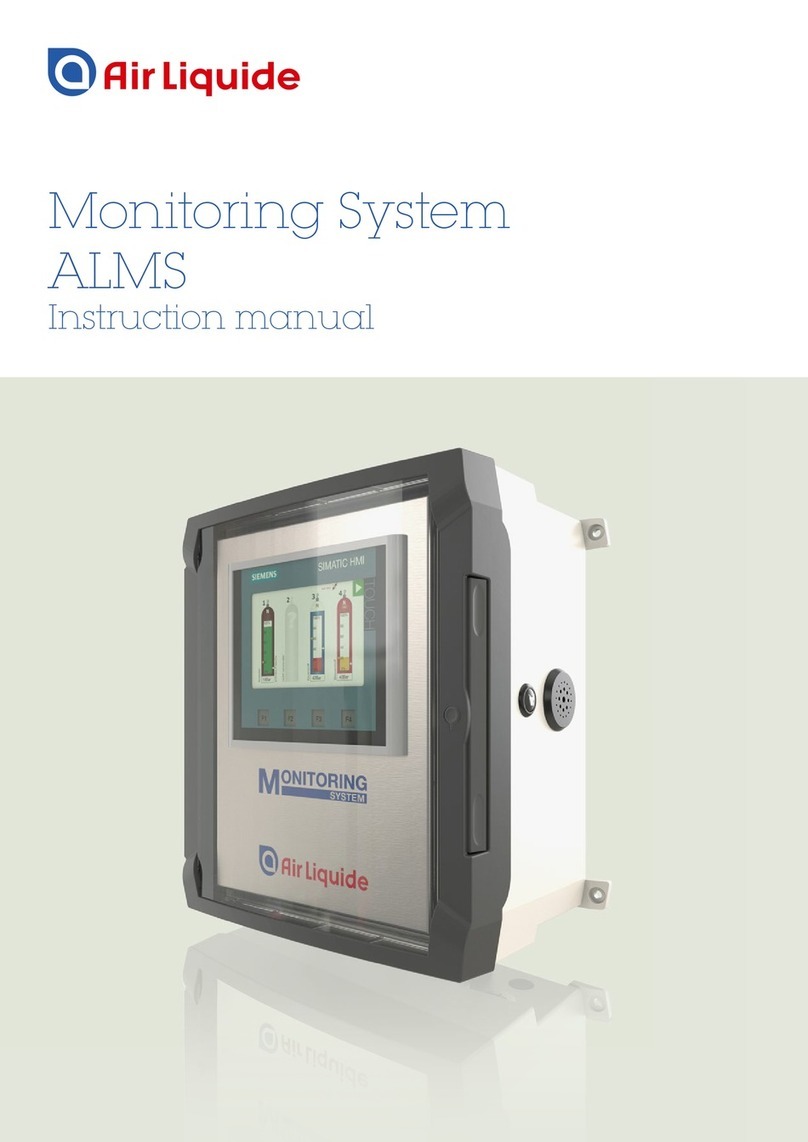
5
1.4 REACH regulation (EC)
n°1907/2006
The pressure reducers are made of brass parts,
essentially the body, which is a copper alloy with
a lead content between 1 % and 4 % w/w. As
requested by art. 33 of REACH Regulation
(Registration, Evaluation and Authorisation of
Chemicals) and with reference to current list of
SVHC (substances of very high concern) available
on ECHA website, we inform that lead may be pre-
sent in a concentration above 0,1 % in our prod-
ucts made of brass.
Lead inclusion in the SVHC list in June 2018 does
not modify the use conditions described in operat-
ing instructions.
Lead will not be released to the surrounding envi-
ronment or the gas used during normal use. After
product end of life, the pressure reducers must be
scrapped by an authorized metal recycler.
1.5 PED Directive 2014/68/EC:
Pressurized equipment
The AIR LIQUIDE fittings with a nominal diameter
<25 mm (e. g. pressure regulators, valves, filters,
etc.) meet the requirements of Article 4,
Paragraph3 of the Directive 2014/68/EU and the
provisions of the article. Therefore these devices
do not bear a CE marking according to Article18
of this Directive.
1.6 FOOD regulation (EC)
n°1935/2004
The AL equipment enhancing the term “FOOD” in
their designation are specifically designed for use
with food gases used for food and beverage ap-
plications. They are compliant with Regulation EC
1935/2004 which requires that packaging and
articles intended to be in contact with foodstuffs
are to be manufactured in compliance with good
manufacturing practices and standard operating
procedures.
Thus, under normal or foreseeable conditions of
use, no transfer of contaminants, eg, metal ele-
ments, to food in quantities that could endanger
human health, modify food composition or dete-
riorate organoleptic characteristics is expected.
Nethertheless, the end-user must check the com-
pliance with an eventual national regulation.
Articles for food usage has a Food logo marking.
For traceability purposes, the batch number is
written on each article and AL can perform a batch
recall, as requested by its Quality.
1.7 Cleaning
Each equipment is subject to a grease removal
and a high quality cleaning to preserve the purity
of gas in the equipment as well as for use with
oxygen for compatible equipment.
A suitable packaging protects the equipment
against exterior pollutants during storage and
transport.
Take care to avoid polluting the equipment during
installation.
2 Safety instructions
All indications labeled with this symbol are
considered as special safety instructions.
2.1 The pressure regulators conform to the rec-
ognized state of the art, as well as the
requirements of existing standards.
• No changes or alterations may be performed
without the manufacturer‘s permission.
2.2 No adapters should be installed between
the cylinder valve and the cylinder pressure
regulator.
Improper operation, or use for purposes
other than those intended can create haz-
ards for the user and other persons, as well
as damage to the pressure regulator.
In general, the regulations, standards and legal
guidelines of the country of use are applied. As fol-
lows the most important from the D-A-CH region.
2.3 Regulations that are applicable in Germany:
2.3.1 Accident prevention regulations /
DGUV rules
• 100-001 “Principles of prevention“
• 113-001 “Explosion prevention rules“
Name plate
• 100-500 “Operation of work equipment“
2.3.2 Laws, directives, technical regulations
Product safety law (ProdSG) with the specific:
• Product safety directives (ProdSV), e.g.
Explosion protection directive (11. ProdSV)
or Pressure device directive (14. ProdSV)
5.Dimensional drawing




























